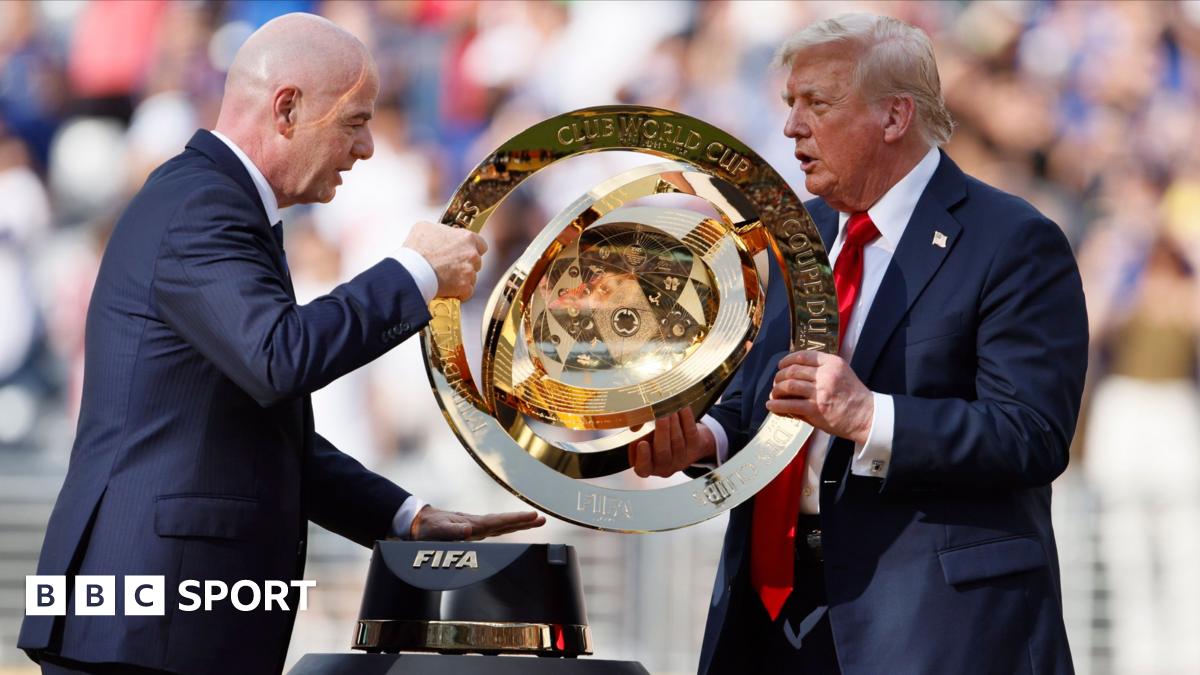What has Club World Cup taught us before 2026 World Cup?

2026 World Cup: Lessons Learned from the Club World Cup's US Dress Rehearsal The recently concluded Club World Cup, held across the United States, Canada, and Mexico, served as a crucial trial run for the expanded 48-team 2026 World Cup. While the tournament showcased the enthusiasm for football in North America, it also highlighted logistical challenges related to extreme weather, stadium accessibility, and varying pitch conditions that FIFA must address to ensure a successful World Cup next summer.
Weather Woes: A Heatwave and Stormy Forecast for 2026? Record-breaking heat and disruptive storms plagued the Club World Cup, raising concerns about player welfare and potential disruptions to the 2026 World Cup. Six matches were delayed due to lightning strikes, with some delays lasting up to two hours. Chelsea manager Enzo Maresca voiced his frustration, stating, "It's a joke, to be honest. It's not football... if you suspend seven or eight games then it's probably not the right place to do the competition." Extreme heat also posed a significant challenge. Temperatures soared, creating conditions of "very high" or "extremely high" risk of heat stress injuries in nine of the 16 host cities, according to FIFPro. Teams adjusted training schedules to conserve energy, and some players requested substitutions due to the heat. Even sniffer dogs at Lincoln Financial Field in Philadelphia were seen wearing Crocs to protect their paws from the hot concrete. Former Manchester City midfielder Michael Brown, who commentated on several games, emphasized the impact of the weather: "The weather has obviously been something all the teams have had to deal with. It's affected the fans too – some of the days, the heat was so extreme. It was just ridiculous and it is something that is going to affect everyone next year. Teams and fans will have to be ready for it." Addressing the Climate Challenge FIFA is considering various solutions, including scheduling kick-off times to avoid the hottest parts of the day and utilizing the five stadiums equipped with roofs. Arsene Wenger, FIFA's chief of global football development, stated, "The weather has been hot but of course we can see about kick-off times, review and possibly look at hiding games earlier in the day at stadiums with roofs."
Attendance Figures: Building Momentum for 2026 Attendance figures during the Club World Cup were mixed, ranging from sparsely populated matches to sold-out crowds. While some games drew fewer than 10,000 spectators, matches involving popular teams like Paris St-Germain and Real Madrid attracted over 60,000 fans. The final between Chelsea and PSG drew an impressive crowd of 81,118. Analysts suggest that low attendance at some matches was due to weekday afternoon kick-off times and a lack of awareness about the tournament among casual fans. American journalist Doug Roberson commented, "It's not because people here don't care about soccer... The people aren't here because it's Monday at 3pm." He also pointed to dynamic ticket pricing, which saw prices fluctuate dramatically, as a potential deterrent. Expert Opinion: Marketing and Accessibility are Key "The key to attracting larger crowds during the World Cup lies in effective marketing and accessible scheduling," says Jonathan Tannenwald, chief soccer correspondent for the Philadelphia Inquirer. "While the die-hard fans will show up regardless, FIFA needs to actively engage the broader public and explain the significance of the tournament. Strategic kick-off times that accommodate work schedules are also crucial."
Stadium Logistics: Transport Troubles and Pitch Imperfections The vast distances between venues in the United States presented logistical challenges. The Club World Cup exposed transportation difficulties, particularly at venues like MetLife Stadium in New Jersey, where fans faced long walks from the nearest train station in extreme heat. Traffic congestion also caused delays for teams. Pitch quality also drew criticism. Some managers and players complained about the varying quality of the grass surfaces, often converted from American football fields. Borussia Dortmund manager Niko Kovac described one pitch as "more a golf green" and criticized the watering practices, adding, "For high-speed football, you need good conditions and you need also a good pitch, the right pitch." Addressing Logistical Concerns FIFA is exploring solutions such as providing free transportation to fans with match tickets and ensuring adequate bed-in time for grass pitches to adapt to different climates. Michael Brown believes that lessons have been learned: "The stadiums have been great and the logistics side, if it were done again, would be easier. They will have learned so much. I think it bodes well for next summer."
Security Measures: A Glimpse into 2026 Security was tight throughout the Club World Cup, with thorough checks and bag searches at all venues. The presence of Donald Trump at the final resulted in heightened security measures, including armed Secret Service agents and snipers on rooftops. The event provided a preview of the security protocols likely to be in place for the 2026 World Cup.
Looking Ahead The Club World Cup provided FIFA with valuable insights into the challenges and opportunities that lie ahead for the 2026 World Cup. Addressing concerns related to weather, transportation, pitch quality, and fan engagement will be critical to ensuring a successful and memorable tournament.
Originally sourced from: BBC Sport Football
